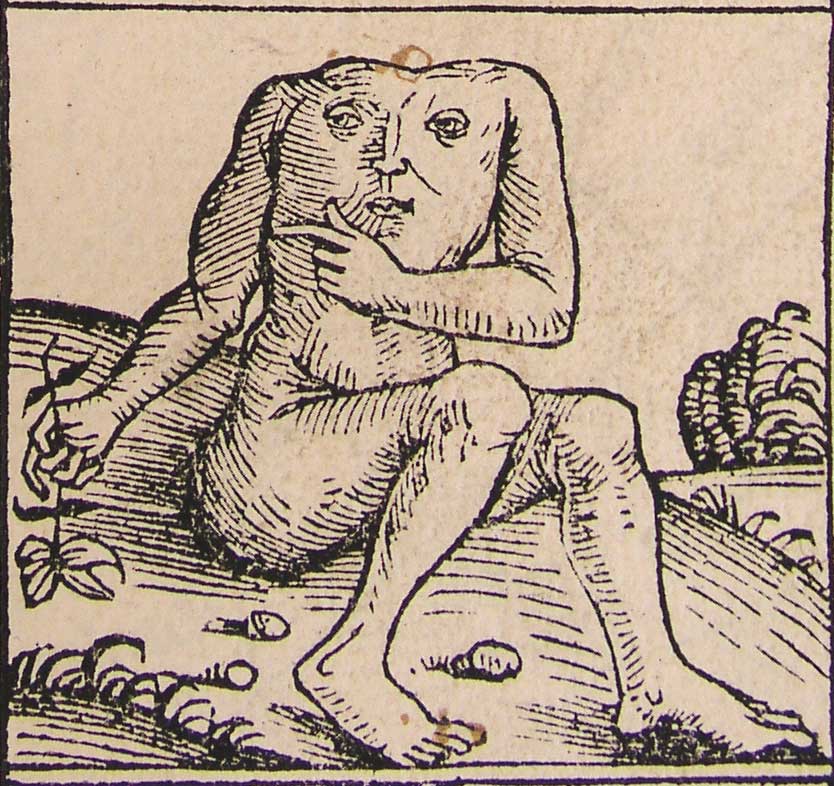“With no head”
Akephaloi, Blemmyes, Epiphagi
In the vast tapestry of Greek mythology, amidst the pantheon of gods and heroes, there exists a curious and enigmatic race known as the Acephali – the “headless ones.” These beings, also referred to as Akephaloi, Blemmyes, or Epiphagi, occupy a unique and unsettling place in the annals of ancient lore.
According to myth, the Acephali were once mortal beings who dared to defy the gods themselves. In an act of brazen rebellion, they rose up against the divine order, challenging the authority of those who ruled from Mount Olympus. In response to this insolence, the gods retaliated with a punishment both cruel and unusual: they stripped the Acephali of their most prized possession – their heads.

Thus, the Acephali became beings without heads, their necks stretching from their shoulders to their chests in a grotesque mockery of the human form. Some accounts describe these headless creatures as having faces adorning their torsos, their features twisted and contorted into a nightmarish visage.
Others tell of those who, in a stroke of fortune or fate, managed to retrieve their severed heads, carrying them tucked securely under their arms like macabre trophies.
The origins of the Acephali are shrouded in mystery, their presence in Greek mythology serving as a haunting reminder of the consequences of hubris and defiance. Yet, despite their monstrous appearance, the Acephali are not merely figures of terror; they are symbols of the consequences of challenging the natural order and defying the will of the gods.
In the ancient world, where the boundaries between myth and reality blurred, the tale of the Acephali served as a cautionary fable, a warning against the dangers of overreaching ambition and unchecked pride. Even today, their legend endures as a testament to the enduring power of myth and the timeless lessons it imparts to those who dare to listen.
Origin | Greece
Image credit
Nuremberg Chronicles | Hartmann Schedel, 1493
